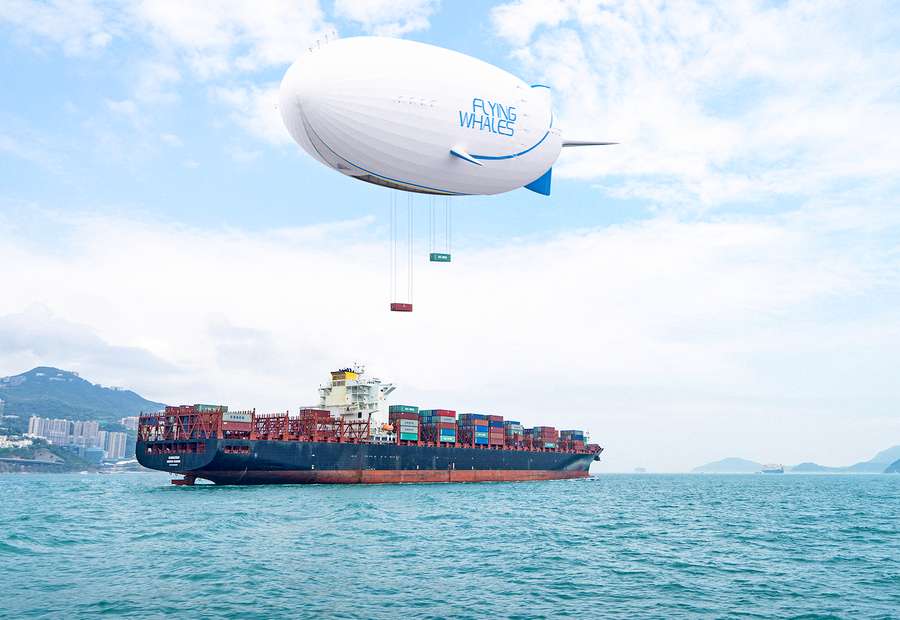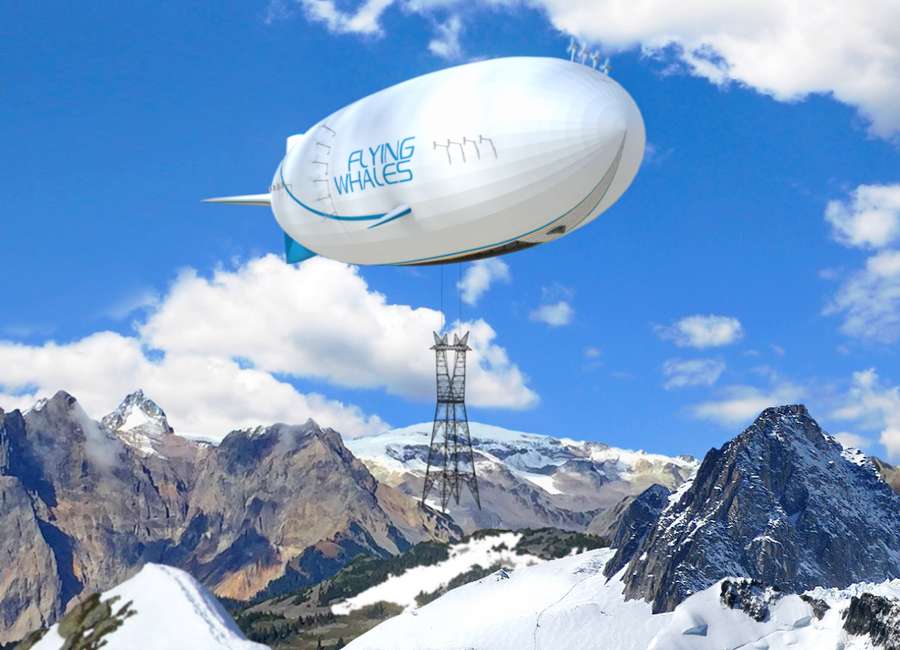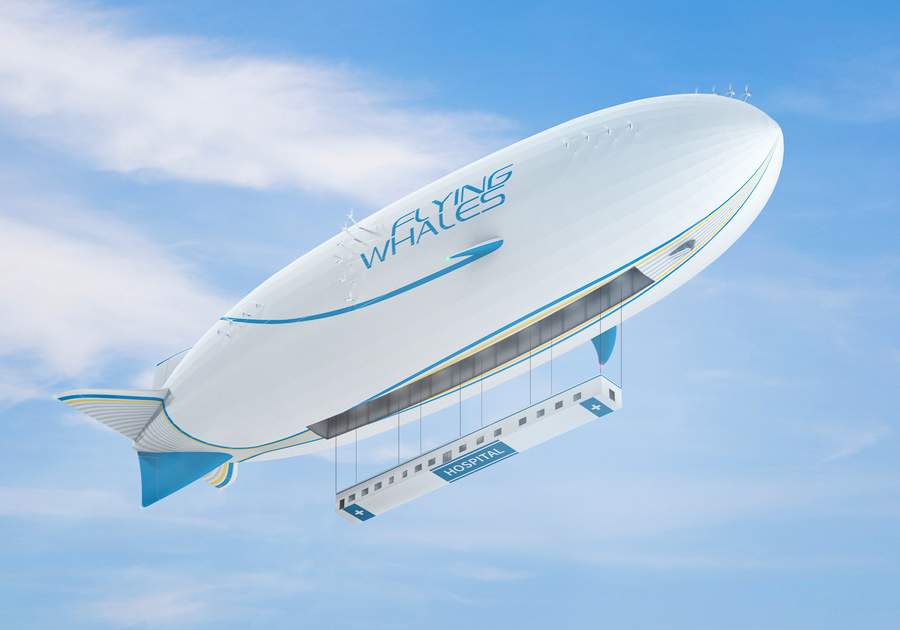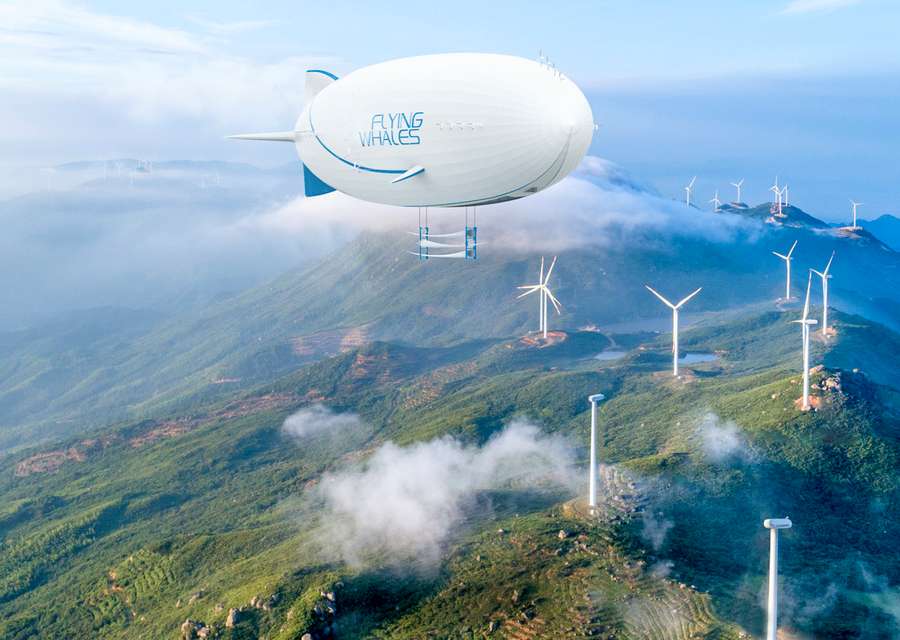A company called Flying Whales is well underway to create a fleet of GIANT airships, for use as freighters – with some unusual features!
A lot of startups are already working on technologies that will bring alternative methods of propulsion to aviation. Some go for all-electric, others for hybrid-electric. Yet others try for something with hydrogen, either in a fuel cell or in the form of hydrogen combustion.

But there are some question marks here. Anything involving batteries (all-electric or hybrid-electric) runs into serious problems, as aircraft designs scale up. Many analysts also question the benefits of ideas like distributed propulsion – because, on their own, they may make some designs less efficient.
Flying Whales would seem like yet another aviation startup… except that it has some strong backing. The company has financial support from the French government and the provincial government of Quebec in Canada. Last summer, Flying Whales announced that it had raised €122 million ($133 million) to develop the vehicle you see here.

The Flying Whales Rigid Airship
It’s called the LCA60T – with “60T” signifying 60 metric tons (132,000 lbs). Everything about the rigid airship that Flying Whales is working on seems enormous. It is filled with 180,000 cubic meters (6.4 million cubic feet) of helium. It is 200 meters (656 feet) long, with a diameter of 50 meters (164 feet). So, it’s about as long as five 737s or three 747s!
More importantly, its cargo hold is 96 meters long, 7 meters wide, by 8 meters high (314’ x 23’ x 26.25’), making it suitable for some impressive loads. Flying Whales plans to make the LCA60T capable of carrying even larger loads externally – provided they are not too heavy, obviously.

All this sounds quite ambitious, but the reason this startup made the news recently is that its project seems to be gathering more pace. Flying Whales and Honeywell announced this week that they signed a contract for a 1-megawatt generator, to power the LCA60T. The aircraft will actually have four of these generators.
Honeywell designed this generator as another application of its HGT1700 auxiliary power unit. This is the APU that sits in the tail of every Airbus A350. Honeywell paired it with a new 1-megawatt generator, that weighs 280 lbs (127 kg). The result is a turbogenerator that could power an entire neighborhood. Or, in the case of the Flying Whales LCA60T, four neighborhoods…

Flying Whales LCA60T – Operation and Roles
This is a distributed propulsion system. Typically, airships are controlled using a combination of shifting ballast, propulsion systems with propellers, and aerodynamic control surfaces. It is not an easy setup and comes with a lot of limitations. But with the use of distributed propulsion, Flying Whales aims to make its rigid airship extremely versatile.

The four turbogenerators will power electric motors spread throughout the hull of the LCA60T. This will not only make controlling it much easier, but it will also allow it to hover with great accuracy. The company hopes that this ability, plus the LCA60T’s load capacity, will give its vehicle a range of useful applications.
One of the first applications that the company envisioned was the logging industry, which often involves carrying heavy loads over uneven terrain. But the LCA60T could also carry bulky items like the blades of wind turbines, which are getting bigger and bigger. Wind turbines get much more efficient as their size increases. But at the moment, the logistics of transporting their blades is a big limiting factor in their growth.

New Roles For Aircraft?
Flying Whales wants to use its design’s ability to hover accurately to allow it to load and unload cargo with little or no special equipment on the ground. This would also enable its use in humanitarian roles after natural disasters when regular supply networks are damaged.
Plus, the LCA60T could carry other bulky items, like enormous electrical pylons. Its designers also think that its aircraft could help load and unload container ships, which often need to wait for their turn, outside overcrowded ports. The aircraft could have other specialized applications in cargo and logistics, for shorter and longer distances.

However, note that “longer distance” is relative. Like all rigid airships, the LCA60T isn’t fast. Its cruise speed will be around 100 km/h or 54 knots, with a full 60-ton payload, at 10,000 feet. This means that it won’t replace cargo aircraft. But then again, it’s not trying to. Flying Whales initially plans to operate its aircraft itself, as it explores their capabilities. It plans the first flight of its prototype in 2025.
When discussing eVTOLs, hybrid aircraft, and distributed propulsion, airships are not what we would think of first. However, there are other projects out there, like the HAV Airlander, with plans to use some of the same technologies. With some good backing, it will be interesting to see if projects like these lead to some “cross-pollination” of emerging propulsion technologies, that could benefit other aviation initiatives.
Sources: Company website, Honeywell




1 comment
B-Frank
“…some question marks here” indeed.
Couple of years ago a smart Graf von Munchhausen cashed in a fortune after presenting state officials and private investors visions exactly like this…
No one asked for the physics.
They just “followed the science”.
To push such behemoth through the air with fifty-sixty knots over usual distances you have to carry energy. Lots of it.
Since the most energy-dense non-nuclear storage – now and then – is a properly filled kerosene tank, a commercial trip under the huge helium bubble would ran into interesting decision makings en-route: Either descending down to destination while dumping 100,000m³ Helium (tagged $ 1.3M) or ascending until the blimp rips apart …
Electric? Well, ask for the graph depicting range, speed, payload.
A whole different chapters are:
The scarce Helium Market w/o Russia, Battery issues (Mass, price, life cycles, safety) and wind-dependance of airships.
Just fly me the numbers – I’m gonna be your first believer! (:-D)